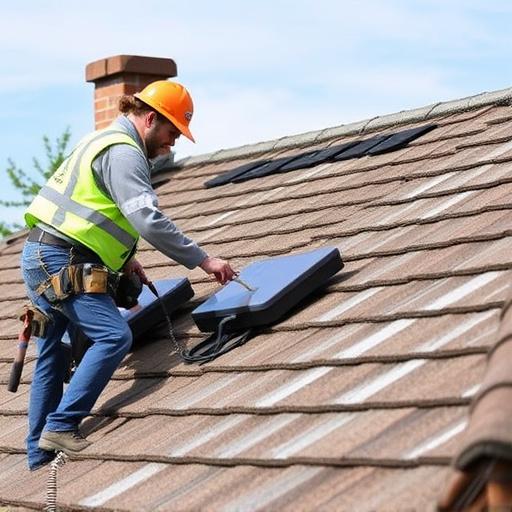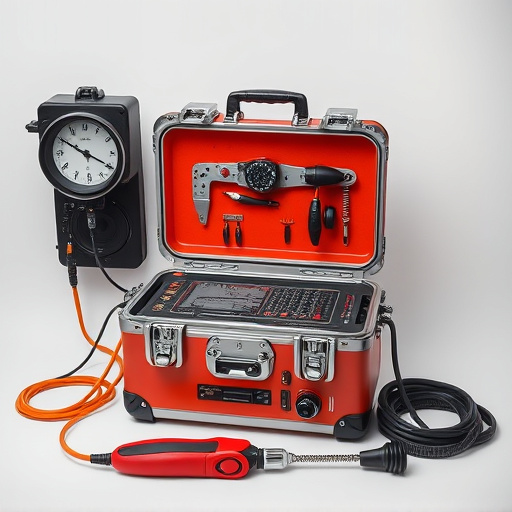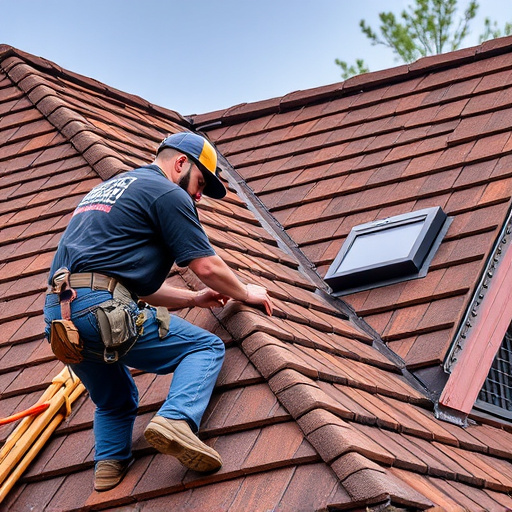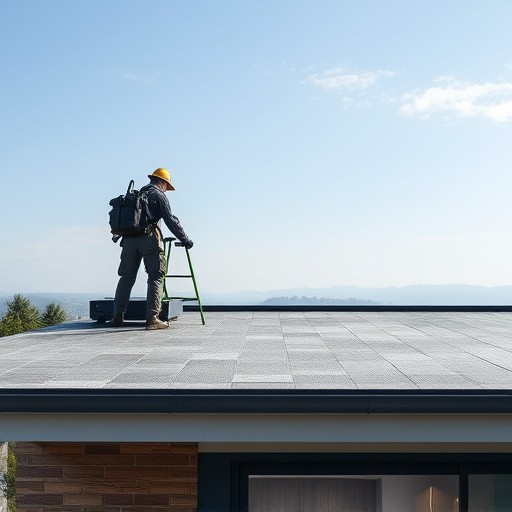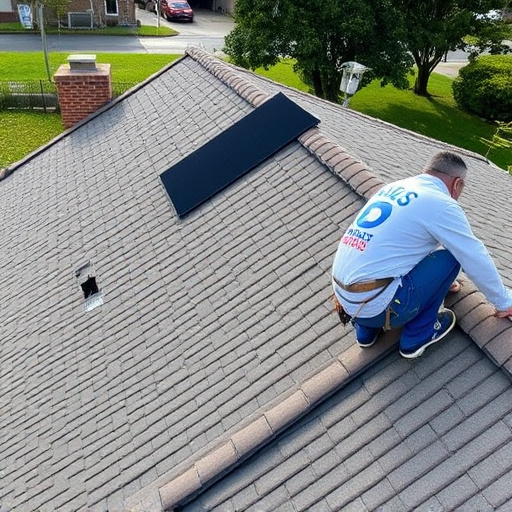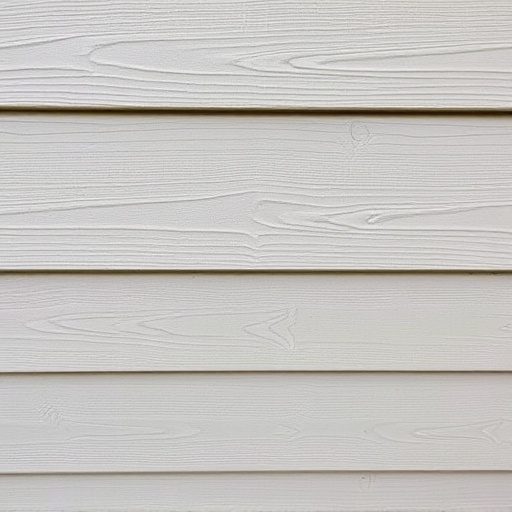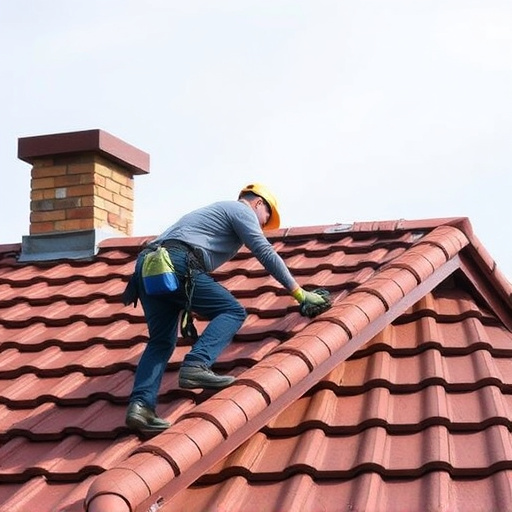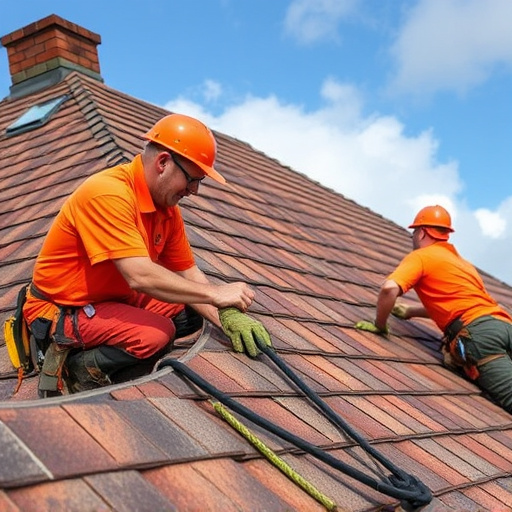Regular roof assessments during bad weather are vital for identifying and addressing potential damage from rain or snow. Prepare tools, materials, and have siding on hand for efficient repairs. Prioritize safety over timelines when planning roof repairs to avoid costly interior damage and structural issues.
“As the seasons change, so do the challenges of home maintenance. Preparing for roof repairs during rainy or snowy weather is crucial for any homeowner. This guide navigates you through the essential steps, from assessing roof damage hidden by adverse weather to gathering the right tools and understanding the art of timing repairs for safety and efficiency. Discover how to turn potential disasters into manageable tasks with expert tips tailored for roof repair.”
- Assess Roof Damage: Spotting Issues in Bad Weather
- Gather Essential Tools and Materials Beforehand
- Timing Repairs: When to Prioritize Safety Over Schedule
Assess Roof Damage: Spotting Issues in Bad Weather
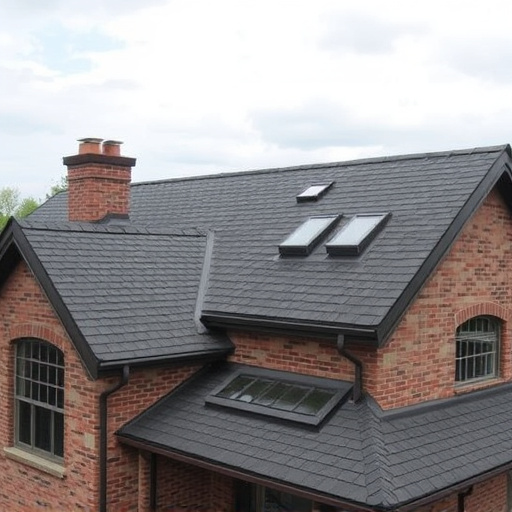
Assessing roof damage during bad weather can seem challenging, but it’s a crucial step in preparing for necessary repairs or even a roof replacement. Heavy rainfall and snowfall can expose vulnerabilities that aren’t immediately apparent under clear skies. Keep an eye out for leaks, as these are often the first sign of trouble. Check for missing or damaged shingles, especially after storms, as they could be blown away, leaving your roof vulnerable to further damage from rain or snow. Even minor issues like curled or cracked shingles can indicate potential problems that, if left unaddressed, may lead to more extensive and costly exterior home improvements later on.
For commercial roofing, regular assessments become even more critical due to the larger size and complexity of the structures. Professional roofers often use advanced equipment to detect moisture intrusion during inspections, which is a key indicator of potential structural weakness. By proactively identifying these issues, property owners or managers can schedule repairs before severe weather hits, saving them from costly roof repair bills and ensuring their building’s safety and longevity.
Gather Essential Tools and Materials Beforehand
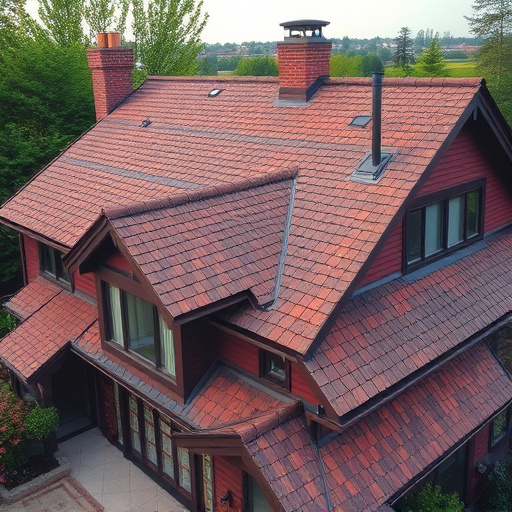
Before tackling any roof repair project, it’s crucial to gather all essential tools and materials beforehand. This preparation step is a game-changer that ensures your repair process runs smoothly, especially during unpredictable weather seasons like rain or snow. Consider investing in high-quality tools designed specifically for roof work, such as ladders, hammer, nails, tarpaulin sheets, and a reliable roof consulting guide. Additionally, having residential siding materials on hand can be beneficial; siding installation often goes hand-in-hand with roof repairs to enhance the overall protection of your home’s exterior.
By being proactive in gathering these essentials, you’ll find yourself better equipped to handle any issues that arise during the repair process, regardless if it’s a leaky roof caused by rain or snow accumulation. This proactive approach not only saves time but also minimizes potential damage to your property and ensures a more efficient and effective roof repair job.
Timing Repairs: When to Prioritize Safety Over Schedule
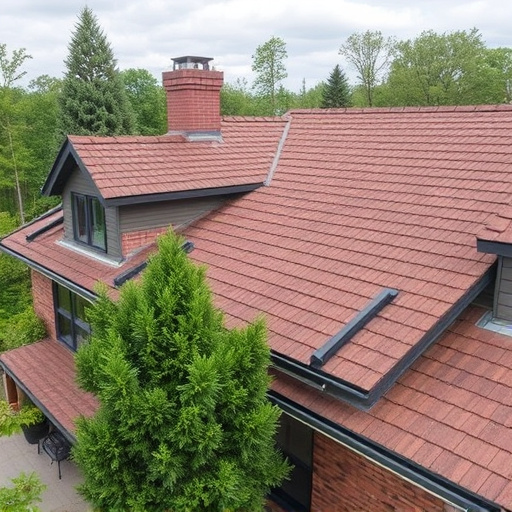
When planning roof repairs, prioritizing safety should always come first, especially during rainy or snowy seasons. In regions with harsh weather conditions, postponing roof repair until warmer months might seem tempting, but it’s crucial to understand that leaving roof issues unaddressed can lead to more extensive and costly damage down the line. Leaks caused by damaged shingles or flashing can result in interior moisture problems, potentially leading to mold growth and structural issues.
Therefore, when considering exterior home improvements like roofing and siding repairs, it’s essential to act promptly. A roof consulting service can help assess the extent of the damage and provide guidance on immediate versus scheduled repairs. While scheduling around weather patterns might be necessary, ensuring the safety and well-being of your family or those working on the repair project should always take precedence over strict adherence to a timeline.
When preparing for roof repairs during rainy or snowy seasons, assessing damage, gathering essential tools and materials, and understanding the best timing for safety are key steps. By being proactive and prioritizing these aspects, you can ensure effective roof repair, maintain your home’s integrity, and safeguard against further weather-related issues. Remember, timely action on roof repair is crucial to preserving your property’s value and protecting your family from potential hazards.

